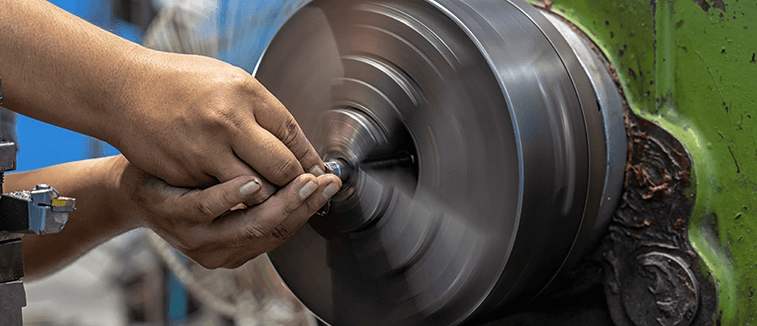Machinist
Operate computer numerically controlled (CNC) machine tools to create parts for machines and equipment.
Job opportunities
-
Jobs in Jobstreet right nowJob growth
-
In the last yearSalary
-
Typical monthly salaryJob satisfaction
-
Job opportunities
-
Jobs in Jobstreet right nowSalary
-
Typical monthly salaryJob growth
-
In the last yearJob satisfaction
-
On this page
- What's it like to be a Machinist?
- How to become a Machinist
- Latest Machinist jobs
- Top skills and experience for Machinists
What's it like to be a Machinist?
Machinists typically work in manufacturing plants and factories where they interpret technical drawings to produce precision parts. They are trained professionals who are responsible for creating setups on grinders, lathes, and other complex machinery.
Tasks and duties
- Understanding the specifications of the output by reviewing samples and drawings.
- Planning the sequence in creating precision parts.
- Measuring and marking materials for cutting or shaping.
- Securing holding fixtures, attachments, accessories, and other materials onto machines.
- Ensuring that workpieces are properly lubricated and cooled.
- Maintaining industrial machines by performing routine machine inspections to repair minor damages.
- Monitoring the production, adjusting feed and other settings depending on the situation.
- Keeping records of approved and defective units.
How to become a Machinist
There are many ways to become a Machinist. Employers, however, tend to hire those who have excellent skills in mathematics. Even though mass-produced parts are more popular today, Machinists are still necessary to install and operate the parts.
- 1.Complete a secondary school certificate or the Sijil Pelajaran Malaysia (SPM). Aim for strong results in mathematics, specifically geometry and trigonometry since they are the most relevant disciplines in this career.
- 2.Consider completing a machinist post secondary program at a community college or a vocational school. You can also take courses in metal shop, drafting, and blueprint reading. Computer courses are also important since you will mostly be handling CNC machines.
- 3.Pursue training. This could be an apprenticeship program that lasts four years.
- 4.If you have completed vocational training, you can apply for a job as a Machinist and learn through your employment.
- 5.Look for employment opportunities in utilitarian, transportation, and even military industries. Once you begin working as a professional Machinist, consider continuing your education by taking a four-year bachelor degree or enrol in trade school.
Compare your salary
Find out how your salary compares with the average salary for Machinists.Latest Machinist jobs on Jobstreet
Be one of the first to discover these recently listed jobs, or browse all Machinist jobs on Jobstreet right now.CNC Milling Machinist
MATHEVON MALAYSIA SDN. BHD.
Gelang Patah, Johor
Full Time
Trades & Services27d ago
Engineering Machinist
Ascentec Engineering Sdn Bhd
Batu Kawan, Penang
Full Time
Trades & Services18d ago
MACHINE OPERATOR
GREEN POINT PLASTICS SDN BHD
Johor
Full Time
Manufacturing, Transport & Logistics4d ago
CNC Repair Technician (CNC机械维修员)
SOLID MACHINERY (M) SDN BHD
Selangor
Full Time
Trades & Services26d ago
Did you find this helpful?
Skills and experience employers are looking for
Having the right skills and experience can make you an in-demand applicant. Machinist employers on Jobstreet are looking for job seekers with expertise in the following areas. Machining
CNC
Milling
Micrometer
Drawing
Grinding
Machinery Maintenance
Machine Operation
Measuring Tools
Understand Technical Drawings
Troubleshooting
Machine Setting
Grinder
Fabrication
G-Code
Reading Drawings
Professional Housekeeping
Drilling
Welding
Preventive Maintenance
Source: Jobstreet job ads and Jobstreet Profile data
Did you find this helpful?